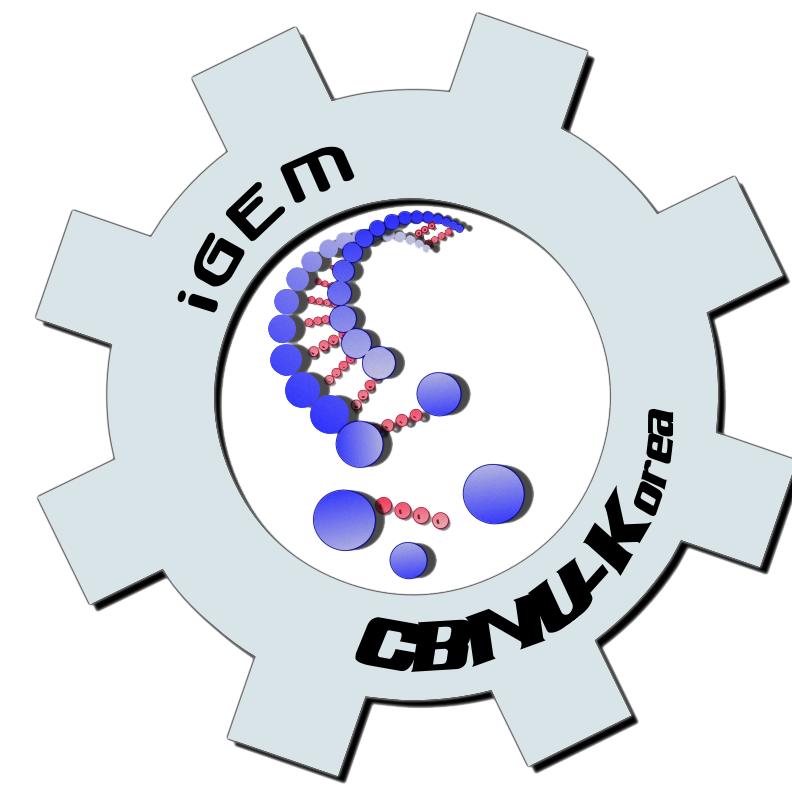Team:Newcastle/Project
From 2009.igem.org
| You can write a background of your team here. Give us a background of your team, the members, etc. Or tell us more about something of your choosing. | |
|
Tell us more about your project. Give us background. Use this is the abstract of your project. Be descriptive but concise (1-2 paragraphs) | |
| Team Example 2 |
| Home | The Team | The Project | Parts Submitted to the Registry | Modeling | Notebook |
|---|
(Or you can choose different headings. But you must have a team page, a project page, and a notebook page.)
Contents |
Overall project
Our Project
The aim of our project is to genetically engineer Bacillus subtilis to be able to detect and sense cadmium which has been taken up from the soil environment and sequester them into a metallothionein. This metallothionein will then become incorporated into a Bacillus spore; the resilience of which means that the cadmium ions can become isolated from the environment (and made bio-unavailable) for many years.
This project involves a number of steps, each of which can be considered as sub projects: 1) Metal intake 2) Metal sensing 3) Tuning of Bacillus subtilis normal stochastic switch 4) Metal sequestration by metallothionein 5) Second stochastic switch
1) Metal Intake
For this project we want to be able to process cadmium and cadmium only. Therefore it would be logical to find a way in which we can increase the intake of cadmium without increasing the intake of other metals too.
It is known that a Bacillus subtilis cell (from the 168 strain) takes up cadmium naturally through the manganese transport system (Laddaga. R.A., Bessen. R., Silver. S.; 1985). Additionally it has been demonstrated that mutations to the manganese transport system can affect its ability to uptake cadmium without affecting its ability to transport manganese (Zeigler. D.R., et al; 1987).
The manganese ion channel that we intend to either upregulate or control is the mntH ion channel (also goes under the name ydaR). mntH is part of the Nramp family of proton-coupled, metal ion transporters (Que. Q., Helmann. J.D.; 2000). It is also classified as a secondary transporter (Membrane Transport website).
It is also known that mntH is regulated negatively by increasing manganese ion concentrations. This is allowed to happen through the promoter called mntR (Que. Q., Helmann. J.D.; 2000). This means that B.subtilis has the ability to limit the manganese metal intake system when the intracellular concentrations of Mn+ starts to near cytotoxic levels.
2) Metal Sensing
If our project is to process cadmium and not other metals, we need to genetically engineer Bacillus subtilis to carry out a set of cellular processes based on the action of metal sensors. These metal sensors will detect cadmium through a system known as AND Gating.
There are two metal sensing repressors, which are known to respond to cadmium: arsR and yozA (also known as czrA).
i) arsR arsR (also known as yqcJ) is a protein which is part of the arsR-SmtB family of transcriptional regulators. It is a regulating protein for the arsenic resistance operon in Bacillus subtilis (NCBI website – arsR family transcription regulator profile) (Moore. C.M and Helmann. J.D; 2005).
The arsR protein acts as a repressor until it is conformationally changed by the presence of arsenic ions (Harvie. D.R, et al; 2006). However, arsenic is not the only metal which can cause this action to happen; it has been noted that silver (Ag(I)), cadmium (Cd) and copper (Cu) (Moore. C.M and Helmann. J.D; 2005) can cause this action to happen.
Metal Sensor Metals Sensed arsR As(III) Ag(I) Cu Cd
ii) czrA (yozA) czrA (also known as yozA) is a member of the ArsR-SmtB family of transcriptional regulators (Moore. C.M and Helmann. J.D; 2005)(Harvie. D.R, et al; 2006). Like arsR, it is a regulator protein which can be relieved from binding to the DNA by being bound to by metal ions – these include zinc (Zn), cobalt (Co), nickel (Ni) and cadmium (Cd) (Moore. C.M and Helmann. J.D; 2005). This can be summarised in the table below:
Metal Sensor Metals Sensed czrA Zn Co Ni Cd
AND Gating If the two ion selectivity tables are put together, it can be seen that the metal common to both sensors is cadmium:
Metal Sensor Metals Sensed arsR As(III) Ag(I) Cu Cd czrA Zn Co Ni Cd
This means that if the two repressors can act on a single promoter or binding site by AND gating, cadmium can be detected and a biological response can be triggered.
3) Tuning of Bacillus subtilis normal stochastic switch
4) Metal sequestration by metallothionein
5) Second stochastic switch
References
Membrane Transport website (http://www.membranetransport.org/all_type_btab.php?oOID=bsub1 )
Charles, M. M., G. Ahmed, et al. (2005). "Genetic and physiological responses of Bacillus subtilis to metal ion stress." Molecular Microbiology 57(1): 27-40.
Duncan, R. H., A. Claudia, et al. (2006). "Predicting metals sensed by ArsR-SmtB repressors: allosteric interference by a non-effector metal." Molecular Microbiology 59(4): 1341-1356.
Laddaga, R. A., R. Bessen, et al. (1985). "Cadmium-resistant mutant of Bacillus subtilis 168 with reduced cadmium transport." J. Bacteriol. 162(3): 1106-1110.
Moore, C. M. and J. D. Helmann (2005). "Metal ion homeostasis in Bacillus subtilis." Current Opinion in Microbiology 8(2): 188-195.
Qiang, Q. and D. H. John (2000). "Manganese homeostasis in Bacillus subtilis is regulated by MntR, a bifunctional regulator related to the diphtheria toxin repressor family of proteins." Molecular Microbiology 35(6): 1454-1468.
Zeigler, D. R., B. E. Burke, et al. (1987). "Genetic mapping of cadmium resistance mutations inBacillus subtilis." Current Microbiology 16(3): 163-165.
 "
"

